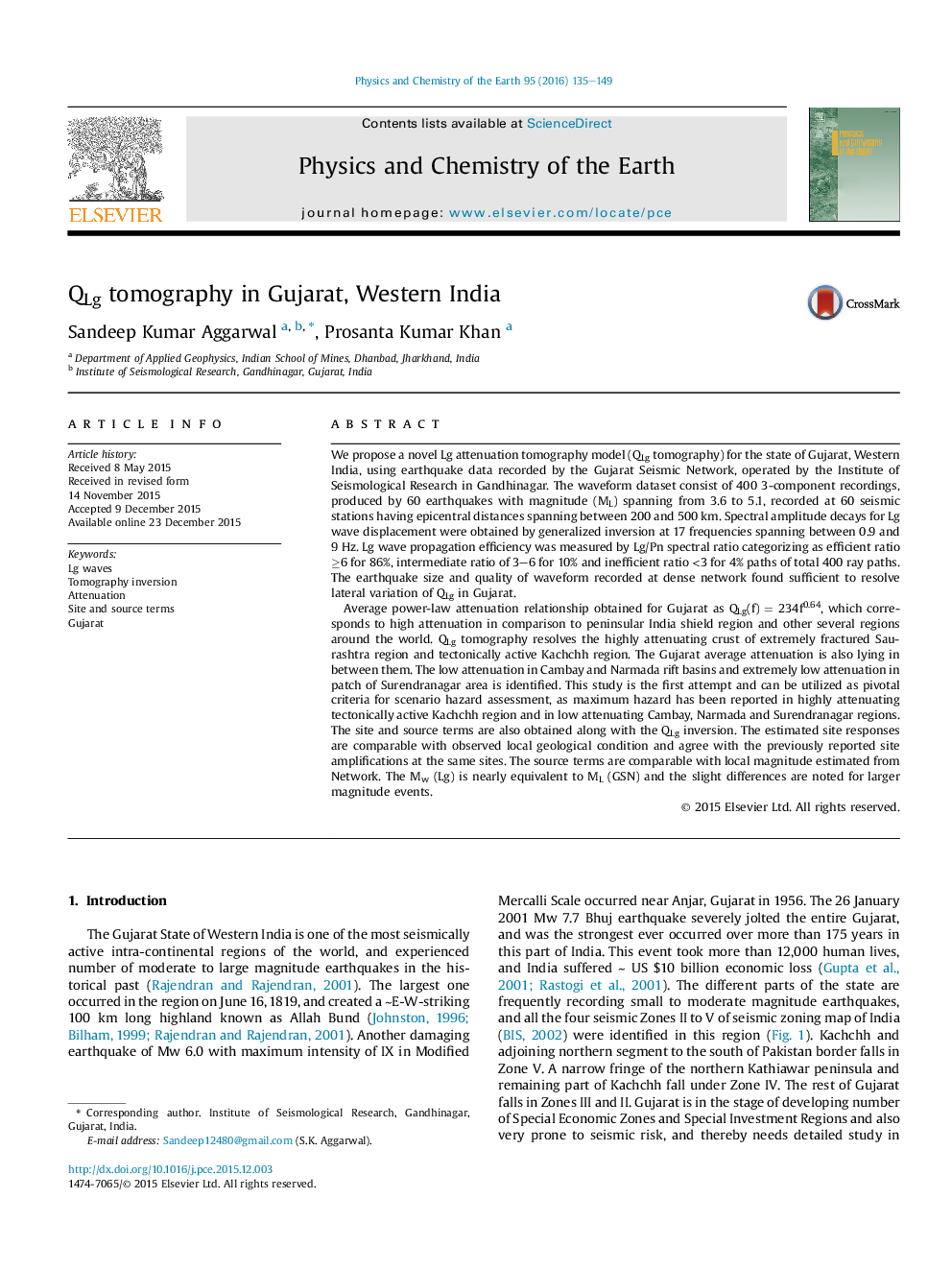| Article ID | Journal | Published Year | Pages | File Type |
|---|---|---|---|---|
| 4720794 | Physics and Chemistry of the Earth, Parts A/B/C | 2016 | 15 Pages |
•Average power-law relationship between QLg and frequency.•QLg tomography in Gujarat, Western India.•Seismic source and site term.
We propose a novel Lg attenuation tomography model (QLg tomography) for the state of Gujarat, Western India, using earthquake data recorded by the Gujarat Seismic Network, operated by the Institute of Seismological Research in Gandhinagar. The waveform dataset consist of 400 3-component recordings, produced by 60 earthquakes with magnitude (ML) spanning from 3.6 to 5.1, recorded at 60 seismic stations having epicentral distances spanning between 200 and 500 km. Spectral amplitude decays for Lg wave displacement were obtained by generalized inversion at 17 frequencies spanning between 0.9 and 9 Hz. Lg wave propagation efficiency was measured by Lg/Pn spectral ratio categorizing as efficient ratio ≥6 for 86%, intermediate ratio of 3–6 for 10% and inefficient ratio <3 for 4% paths of total 400 ray paths. The earthquake size and quality of waveform recorded at dense network found sufficient to resolve lateral variation of QLg in Gujarat.Average power-law attenuation relationship obtained for Gujarat as QLg(f) = 234f0.64, which corresponds to high attenuation in comparison to peninsular India shield region and other several regions around the world. QLg tomography resolves the highly attenuating crust of extremely fractured Saurashtra region and tectonically active Kachchh region. The Gujarat average attenuation is also lying in between them. The low attenuation in Cambay and Narmada rift basins and extremely low attenuation in patch of Surendranagar area is identified. This study is the first attempt and can be utilized as pivotal criteria for scenario hazard assessment, as maximum hazard has been reported in highly attenuating tectonically active Kachchh region and in low attenuating Cambay, Narmada and Surendranagar regions. The site and source terms are also obtained along with the QLg inversion. The estimated site responses are comparable with observed local geological condition and agree with the previously reported site amplifications at the same sites. The source terms are comparable with local magnitude estimated from Network. The Mw (Lg) is nearly equivalent to ML (GSN) and the slight differences are noted for larger magnitude events.
